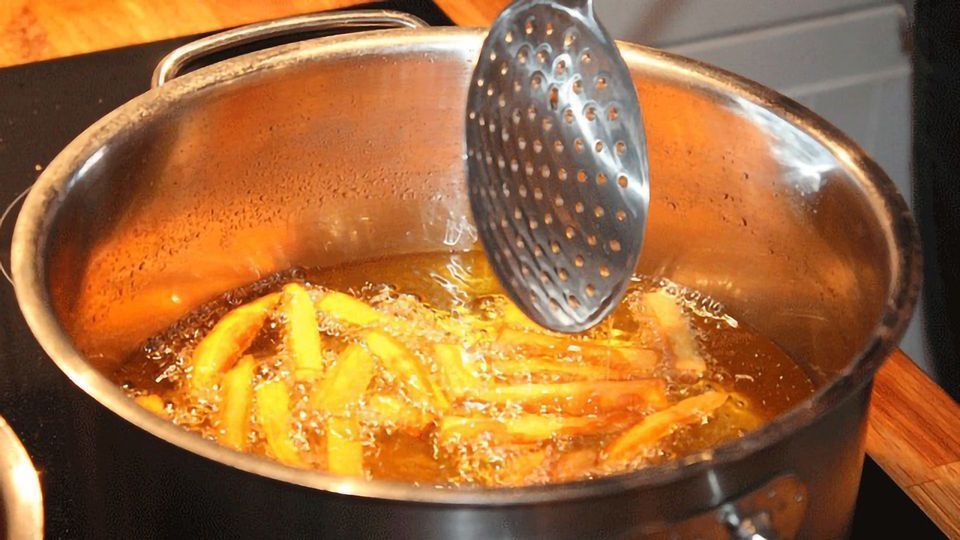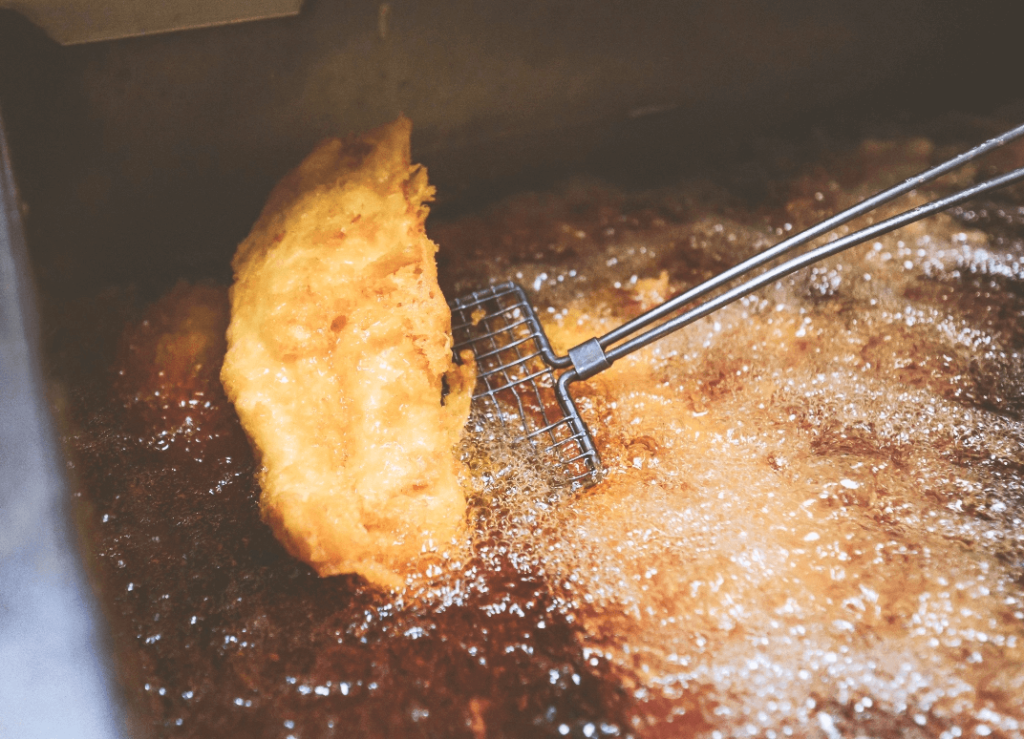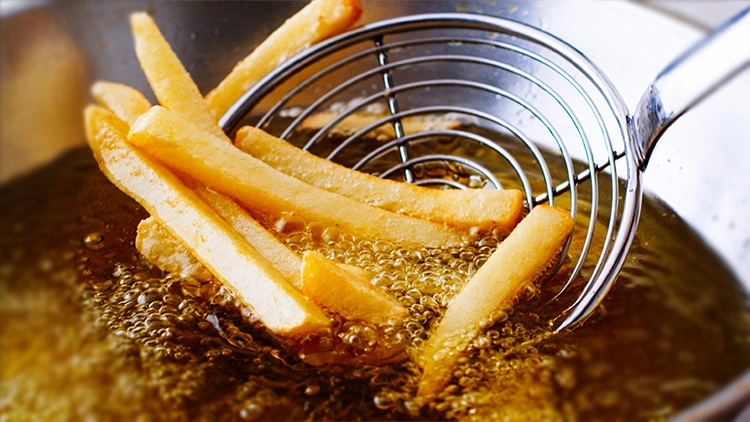Chip shops, especially in the United Kingdom, typically use vegetable oil or a blend of vegetable oils for frying chips (French fries). Vegetable oils such as sunflower oil or rapeseed oil are commonly used due to their high smoke points, which means they can reach high temperatures without breaking down and producing undesirable flavors.
The choice of oil can vary from one chip shop to another, and some may use specific blends for a desired taste or to enhance the crispiness of the chips. Additionally, some chip shops may use beef dripping for frying, which can add a distinctive flavor to the chips. It’s essential for chip shops to use oils that can withstand the high temperatures required for deep-frying while also providing a pleasant taste to the finished product.
What types of oil are commonly used in chip shops?

In chip shops, commonly known as fish and chip shops, a type of vegetable oil is typically used for frying. The specific type of oil can vary, but some common choices include:
- Vegetable Oil: This is a generic term for oils derived from plants such as soybean, corn, sunflower, or a blend of these. It’s a popular choice due to its neutral flavor and high smoke point.
- Rapeseed Oil: Also known as canola oil, it is derived from the seeds of the canola plant. It has a mild flavor and a high smoke point, making it suitable for deep-frying.
- Sunflower Oil: Extracted from sunflower seeds, sunflower oil is another option for frying. It has a neutral taste and a relatively high smoke point.
- Palm Oil: While less common due to environmental and health concerns associated with its production, some chip shops may use palm oil for frying.
The choice of oil can affect the flavor of the food, the overall quality of the frying process, and the health considerations associated with the type of oil used.
How do factors like smoke point and flavor influence the choice?
The choice of oil in chip shops is influenced by various factors, including smoke point, flavor, and other practical considerations. Here’s how these factors come into play:
Smoke Point
The smoke point is the temperature at which an oil begins to smoke and break down, producing harmful compounds and an undesirable flavor.
For deep-frying, a high smoke point is crucial because the oil needs to reach and maintain a high temperature without breaking down. Oils with higher smoke points are more suitable for deep-frying as they can withstand the high temperatures involved.
Flavor
Many chip shops prefer oils with neutral flavors, as they don’t impart a strong taste to the food being fried. Neutral oils allow the natural flavors of the ingredients, such as the fish and potatoes, to shine through.
Oils like vegetable oil, rapeseed (canola) oil, and sunflower oil are popular choices in chip shops due to their mild and neutral flavors.
Health Considerations
Health considerations play a role in the choice of oil. While some chip shops traditionally used oils high in saturated fats, there is a growing trend towards using oils with healthier fat profiles, such as those high in unsaturated fats.
Chip shops may avoid oils that contain trans fats, as they have been linked to adverse health effects.
Cost and Availability
The cost and availability of oils can influence the choice for chip shops. Some oils may be more affordable or readily available in certain regions.
Sustainability
Due to growing environmental concerns, some chip shops may consider the sustainability of the oil they use. For example, palm oil, while having a high smoke point, has faced criticism for its impact on deforestation and biodiversity.
What are the regional and individual variations in oil preferences?

Regional and individual variations in oil preferences among chip shops can be influenced by a variety of factors, including local culinary traditions, availability of certain oils, customer preferences, and health considerations. Here are some examples of regional and individual variations:
Cultural and Regional Preferences
In the UK, vegetable oil, rapeseed oil, and sunflower oil are commonly used in chip shops. However, there may be variations based on regional preferences.
Canola oil is widely used in North American deep-frying due to its neutral flavor and high smoke point.
Depending on the region, chip shops in Asia may use oils like palm oil or various vegetable oils. Peanut oil is a popular choice in some Asian countries for its distinctive flavor.
Local Availability
The availability of certain oils in a specific region can influence the choices made by chip shops. Some oils may be more prevalent or affordable in certain areas.
Health Trends
In regions with a strong emphasis on health-conscious eating, chip shops may opt for oils that are perceived as healthier, such as those high in unsaturated fats or with lower levels of saturated fats.
Environmental Considerations
Chip shops in regions with a heightened awareness of environmental issues may choose oils based on sustainability criteria, avoiding oils associated with deforestation or environmental degradation.
Individual Shop Preferences
Some chip shops are family-owned, and the choice of oil may be influenced by long-standing family traditions or recipes.
The preferences and culinary philosophies of individual chefs or owners can also play a role in the choice of cooking oil.
Ethnic and Specialty Variations
In areas with diverse culinary influences, chip shops may experiment with oils commonly used in specific ethnic cuisines, adding unique flavors to their fried dishes.
FAQ’s
What oil do chicken shops use?
Chicken shops commonly use vegetable oil or blends like soybean and canola for frying.
What oil do KFC use?
KFC has used various cooking oils in different regions, with a preference for oils with high smoke points, like palm oil or soybean oil.
What oil did KFC use?
KFC has historically used partially hydrogenated soybean oil for frying, but the specific oil used can vary over time and by region.
What oil does KFC India use?
KFC India may use a combination of oils, but historically, they have used palm oil or other vegetable oils for frying.
What does KFC use to fry their chicken?
KFC typically uses a blend of oils, often including palm oil or other vegetable oils, for frying their chicken.
Does KFC use palm oil?
Yes, KFC has used palm oil in the past for frying, but the company has also made efforts to address environmental concerns by exploring sustainable sourcing options.
Final Words
When it comes to chip shops, the type of oil used plays a crucial role in determining the taste and quality of the final product. Chip shops commonly use vegetable oils like sunflower or rapeseed, and sometimes even beef dripping for a unique flavor. The choice of oil varies among chip shops and regions, with factors like smoke point and flavor influencing preferences.
Ultimately, selecting the right oil is essential to achieving the desired crispiness and deliciousness of the chips. So, whether it’s a local favorite or a regional specialty, the type of oil used makes a big difference in the world of chip frying.

